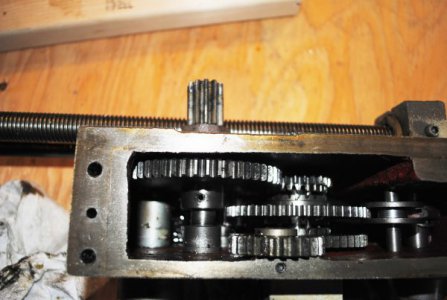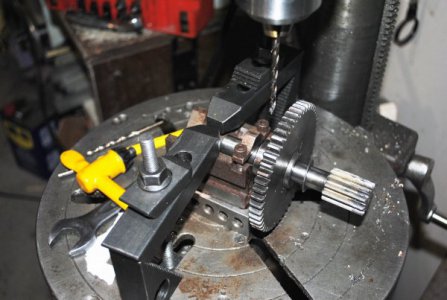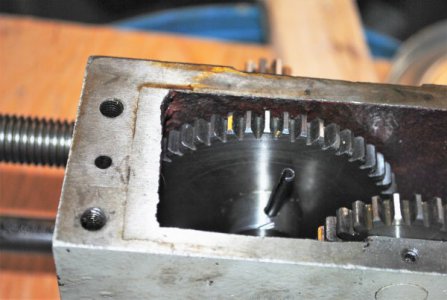- Joined
- Apr 8, 2013
- Messages
- 1,979
The gear sticking out the back of my apron the meshes with the drive rack is chowed. I just got the replacement and it's an 11T gear on an integral polished shaft with no holes in it despite that the manual shows a roll pin going thru it. Grizzly Tech says they didn't put the hole in the shaft because it's more accurate to drill it in place with a hand drill. I'm not saying they're wrong but it's starting to smell a bit like low tide around here. I haven't taken the apron apart yet but on the parts diagram it looks like the roll pin is right along side a 25T gear which obviously has a much bigger diameter than the shaft. I don't know but I think it unlikely I'll be able to get a straight shot at drilling thru this ground shaft accurately with the unit in place. I would appreciate any opinions or advice from the group.
thx
Ed P
thx
Ed P




